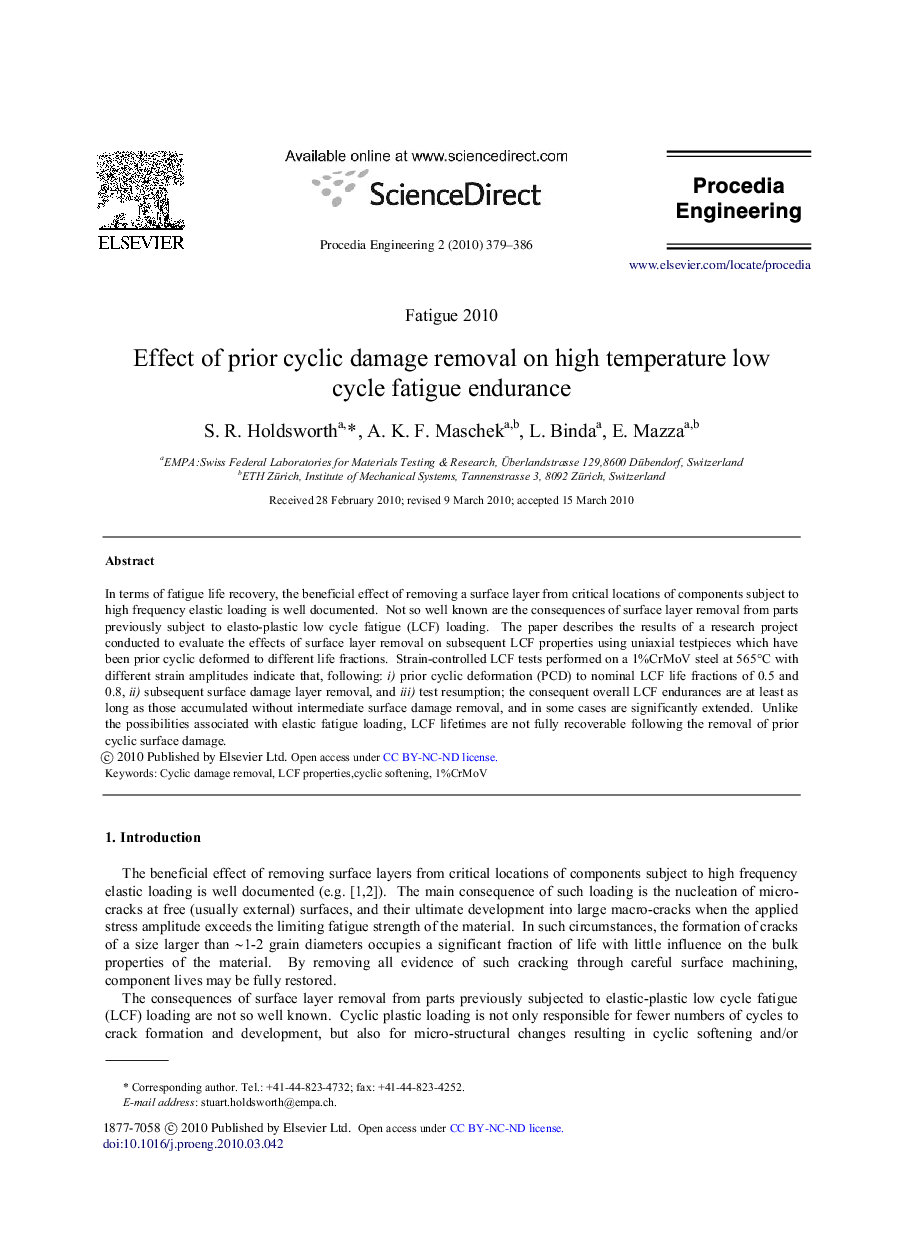| Article ID | Journal | Published Year | Pages | File Type |
|---|---|---|---|---|
| 864629 | Procedia Engineering | 2010 | 8 Pages |
In terms of fatigue life recovery, the beneficial effect of removing a surface layer from critical locations of components subject to high frequency elastic loading is well documented. Not so well known are the consequences of surface layer removal from parts previously subject to elasto-plastic low cycle fatigue (LCF) loading. The paper describes the results of a research project conducted to evaluate the effects of surface layer removal on subsequent LCF properties using uniaxial testpieces which have been prior cyclic deformed to different life fractions. Strain-controlled LCF tests performed on a 1%CrMoV steel at 565 °C with different strain amplitudes indicate that, following: (i) prior cyclic deformation (PCD) to nominal LCF life fractions of 0.5 and 0.8, (ii) subsequent surface damage layer removal, and (iii) test resumption; the consequent overall LCF endurances are at least as long as those accumulated without intermediate surface damage removal, and in some cases are significantly extended. Unlike the possibilities associated with elastic fatigue loading, LCF lifetimes are not fully recoverable following the removal of prior cyclic surface damage.
